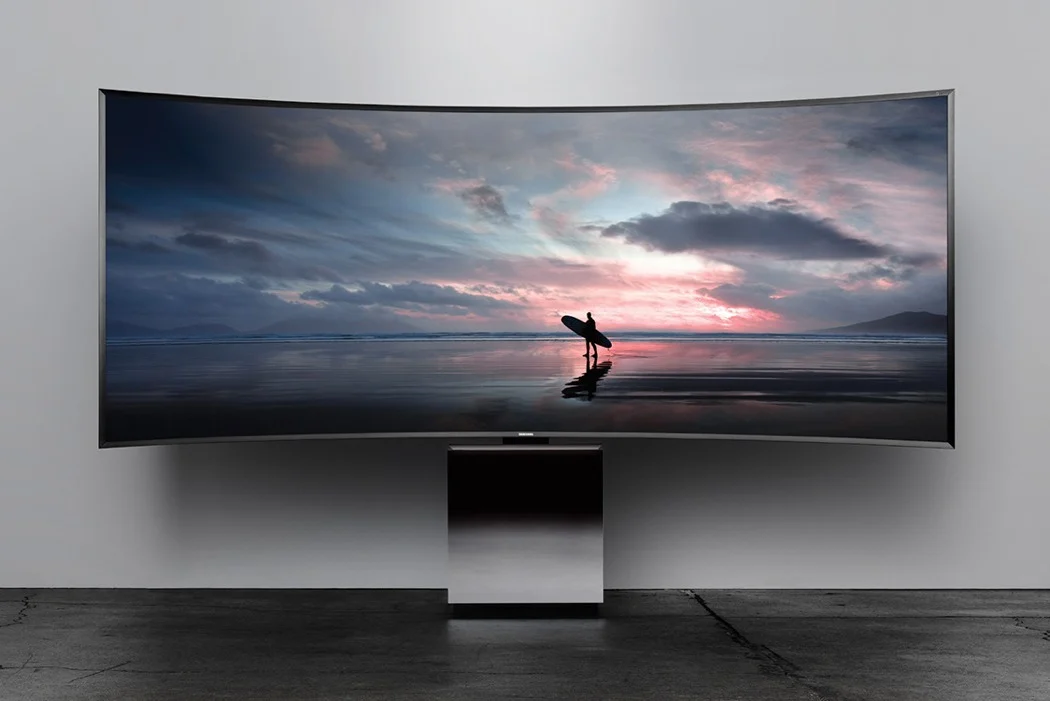Television sets have undergone remarkable transformations since their inception. From the bulky, black-and-white boxes of the mid-20th century to the sleek, high-definition displays of today, TVs have continuously evolved, offering viewers increasingly sophisticated visual and auditory experiences. This evolution is not just about aesthetics; it’s also about integrating new technologies that enhance usability and connectivity.
In today’s digital age, staying abreast of technological advancements is more crucial than ever. The television, once a standalone device for passive entertainment, has become a central hub in smart homes, capable of interacting with various devices and services. As we look towards the future, the pace of innovation shows no signs of slowing down. Emerging technologies promise to revolutionize how we consume content, interact with our environment, and experience entertainment.
This article delves into the exciting future of television sets, exploring the latest innovations and trends shaping the next generation of home entertainment. From smart integration and advanced display technologies to enhanced viewing experiences and sustainable practices, we will examine the key developments that are set to redefine the television landscape. Additionally, we’ll venture into speculative ideas for the distant future, considering possibilities that today might seem like science fiction but could soon become reality.
Smart TVs and Integration
The rise of smart TVs has significantly changed how we interact with our television sets. Modern smart TVs come equipped with built-in internet connectivity, allowing users to stream content from popular services like Netflix, Hulu, and Amazon Prime directly to their screens. These devices also offer app ecosystems, enabling users to download and use various applications for entertainment, education, fitness, and more.
Integration with smart home devices is another key feature of the latest smart TVs. Many models now support voice assistants like Amazon Alexa and Google Assistant, allowing users to control their TV and other connected devices with simple voice commands. This integration extends to smart lighting, thermostats, and even security systems, creating a cohesive smart home environment where the TV acts as a central control hub.
The benefits of having a smart TV ecosystem are manifold. Beyond convenience, smart TVs offer enhanced personalization, learning user preferences to recommend content tailored to individual tastes. They also support advanced features like multi-room audio, screen mirroring, and the ability to cast content from mobile devices, making the television a versatile and integral part of the modern home.
Display Technology Advances
One of the most exciting areas of innovation in television sets is display technology. OLED (Organic Light Emitting Diode), QLED (Quantum Dot LED), and MicroLED are at the forefront of this revolution, each offering distinct advantages. OLED displays are known for their deep blacks and vibrant colors, achieved by lighting each pixel individually. QLEDs, on the other hand, use quantum dots to enhance brightness and color accuracy, making them ideal for well-lit environments. MicroLED technology, though still in its early stages, promises the best of both worlds with superior brightness, color range, and longevity.
As manufacturers push the boundaries of resolution, 8K TVs are becoming more prevalent. These sets offer four times the resolution of 4K, delivering an unprecedented level of detail. However, the content ecosystem for 8K is still developing, and it remains to be seen whether mainstream consumers are ready to adopt this technology widely.
Looking further ahead, the future of display technology includes flexible and transparent screens. Flexible displays could enable TVs that roll up or fold away when not in use, offering unprecedented versatility in placement and storage. Transparent screens might blend seamlessly into their surroundings, doubling as windows or interactive surfaces, thereby transforming our interaction with visual content.
Enhanced Viewing Experiences
The integration of Virtual Reality (VR) and Augmented Reality (AR) with television sets is set to redefine the viewing experience. VR can transport viewers into fully immersive worlds, making them feel as if they are part of the action. AR, meanwhile, can overlay digital content onto the real world, enhancing educational programs, sports broadcasts, and even gaming.
Audio technology is also advancing to complement these visual innovations. Immersive audio technologies like Dolby Atmos and DTS:X create a three-dimensional soundscape, allowing viewers to experience sound from all directions, adding a new level of immersion to their entertainment.
Personalized viewing experiences are another exciting development. Using artificial intelligence, future TVs will be able to learn individual viewer preferences and habits, offering customized content recommendations and even adjusting picture and sound settings automatically to suit different types of content. This level of personalization ensures that each viewing experience is tailored to the user’s preferences, enhancing overall satisfaction.
Sustainability and Energy Efficiency
As the world becomes more environmentally conscious, the sustainability of electronic devices, including television sets, is increasingly important. Manufacturers are now focusing on using eco-friendly materials and sustainable manufacturing processes. This includes reducing the use of harmful chemicals, utilizing recycled materials, and ensuring that TVs are easier to disassemble and recycle at the end of their life cycle.
Energy efficiency is another critical area. Modern TVs are designed to consume less power without compromising performance. Features like automatic brightness control, which adjusts screen brightness based on ambient light conditions, help reduce energy consumption. Some models also have eco-modes that further minimize power usage.
Recycling and e-waste management initiatives are being implemented to handle the disposal of old television sets responsibly. Companies are offering take-back programs and working with recycling partners to ensure that obsolete models are disposed of in an environmentally friendly manner. These efforts are crucial in reducing the environmental impact of electronic waste and promoting a circular economy.
Content Delivery and Streaming Innovations
The rise of streaming services has dramatically altered the landscape of content delivery. Traditional broadcasting is giving way to on-demand streaming, allowing viewers to watch what they want, when they want. This shift has been facilitated by advancements in internet speeds and the proliferation of streaming platforms.
Cloud gaming is another area where televisions are playing a central role. Services like Google Stadia, NVIDIA GeForce NOW, and Xbox Cloud Gaming enable users to play high-quality games directly on their TV without the need for a dedicated gaming console. This integration is set to expand, making TVs an all-in-one entertainment hub for both passive viewing and interactive gaming.
Looking ahead, the implementation of 5G technology promises to revolutionize content delivery further. With its ultra-fast speeds and low latency, 5G will enable seamless streaming of high-definition content and real-time interactive experiences. This technology will also support new forms of content, such as live virtual reality broadcasts and augmented reality experiences, pushing the boundaries of what we can watch and do with our television sets.
Consumer Preferences and Market Trends
Consumer preferences in television sets are continually evolving. There is a growing demand for larger screens as viewers seek a more immersive home theater experience. Ultra-high-definition resolutions and advanced display technologies are becoming standard expectations rather than premium features.
Market trends indicate a shift towards multifunctional devices. Consumers are looking for TVs that offer more than just traditional viewing capabilities. Smart integration, gaming functionalities, and advanced connectivity options are now significant selling points. This trend is driving manufacturers to innovate and differentiate their products in an increasingly competitive market.
The next decade will likely see continued advancements in TV technology, but manufacturers will also face challenges. Keeping up with rapidly changing consumer expectations, addressing environmental concerns, and managing the economic aspects of producing advanced technologies at a reasonable cost are all critical issues. However, these challenges also present opportunities for companies to lead in innovation and sustainability.
Speculative Future Concepts
Looking far into the future, several speculative concepts could redefine television as we know it. Holographic television sets, for example, could bring three-dimensional images into our living rooms without the need for special glasses. This technology, still in its infancy, could one day offer a fully immersive viewing experience that feels incredibly lifelike.
Brain-computer interfaces (BCIs) are another futuristic idea. These devices could allow users to control their TVs and interact with content using their thoughts alone. While this technology is still largely experimental, advancements in neuroscience and computing could make it a reality in the coming decades.
Televisions as multi-sensory experience centers represent another intriguing possibility. Future TVs could incorporate technologies that stimulate other senses, such as smell and touch, to create truly immersive environments. Imagine watching a cooking show and being able to smell the food or feeling the breeze in a nature documentary. Such innovations could fundamentally change how we experience media.
For The Road
The future of television sets is poised to be incredibly exciting, with numerous innovations and trends shaping the next generation of home entertainment. From smart integration and advanced display technologies to enhanced viewing experiences and sustainable practices, the television is set to become an even more integral part of our lives. As we look further ahead, speculative concepts like holographic displays and brain-computer interfaces offer a glimpse into a future where the boundaries between reality and digital experiences continue to blur. The journey of television technology is far from over, and the next few decades promise to bring even more groundbreaking developments.

